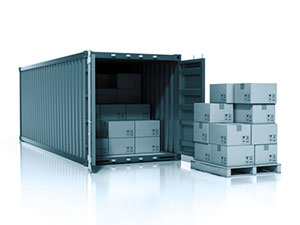Packing and marking

Packing is an important part of shipping. Goods for export are to be properly packed. Cargo packaging is aimed to protect your goods and keep valuable content from any negative effect and damage. When the product arrives with the same quality and appearance — it’s not a surprise, it is the norm. Improper packaging leads to goods damage and results in financial losses.
Packing can be external and internal ones, in which the goods are sold. There are a lot of package types, for example pallets, cartons, bubble wrap, corrugated cardboard, stretch wrap, packaging tape, wooden frame.
Consumer goods packing has a double function. On the one hand, it ensures that the goods or products are totally protected in transit. On the other – it helps to advertise a product and attract a customer. So, never underestimate the value of proper and adequate packaging.
Labeling and packaging of goods is an important condition which guarantees that your cargo will be delivered safely and securely. Because of the use of the correct type of packaging for certain type of cargo and considered marking, warehouse workers will be able to understand how to deal with the cargo without damaging the contents. With skilled labeling and packaging of goods, your cargo will remain intact, and safely reach its destination.
Marking is the application of informational symbols, special signs, labels, tags and other marks on products, packaging or containers. These symbols are internationally accepted standards, expressed in an intuitive visual form.

Goals of cargo marking:
- Information about the contents of the package
- Minimizing risk of cargo damage
- Recommendations for careful handling during loading, unloading, unpacking, transport and storage
- Proper marking speeds up delivery of the goods to their destination
The marking of import cargo should include information about the goods in English, but in any case, it is highly recommended to confirm marking with logistics company. All cases, which need special handling, must have additional marking. For example, «handle with care», «top», «do not turn over», «do not use hooks» and others.
Please also read other articles in this section:
HOW TO CLASSIFY YOUR GOODS FOR EXPORT?
At first glance it seems simple matter. However, it might be difficult. The Commodity Code (HS CODE) is organized into 21 sections and 97 chapters, accompanied with general rules of interpretation and explanatory notes. In order to classify goods it’s necessary to know full description of the goods (size, specification, material composition and so on). Classifying your goods correctly will help to ensure that you pay the right duty for import-export and VAT and know whether import or export certification is required. Incorrect classification can lead to your goods being delayed or/and possible financial penalties.



